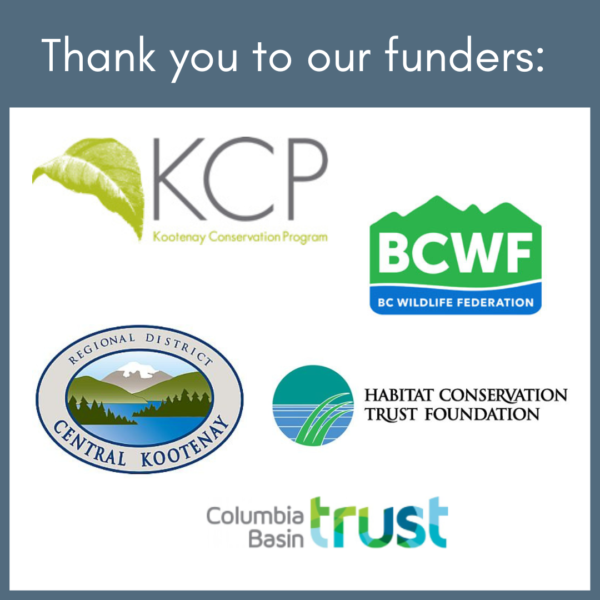2022 Harrop Wetland Enhancement Project – Description & Community Feedback Survey
Harrop Wetland Survey
Link to Survey
Harrop Wetland Community Meeting
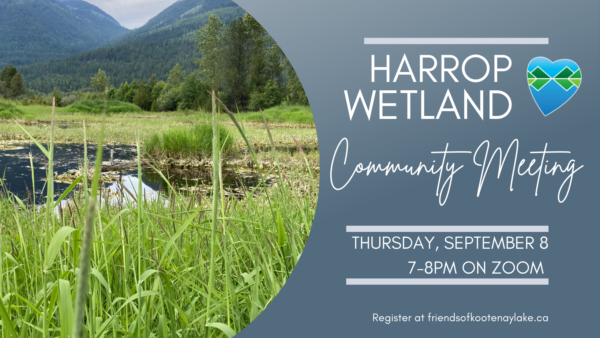
Friends of Kootenay Lake’s Harrop Wetland Enhancement Project is underway and we want to share our 2022 plans with you! Construction at the wetland is expected to begin in late October. In this webinar, we will be covering the history of the Harrop Wetland Project, our monitoring goals for 2022, what you can expect to see at the wetland during the construction phase, and different volunteer opportunities! to get involved with the restoration efforts.
Register here
Information about Harrop Wetland & Plans for 2022
The Harrop wetland complex is located in Sunshine Bay Regional Park in Harrop, BC. The wetland consists of a series of ephemeral wetlands, meaning holding water only part of the year, and serves as a breeding site for western toad.
In 2013, FoKLSS was contacted by concerned community members in the Harrop area regarding mass die-offs of western toad tadpoles due to insufficient wetland pond water levels, ATV “mud bogging” activity in the sensitive habitat, and dogs killing wildlife in the area.
Timeline of events
- 2014 – FoKLSS conducted extensive community outreach and brought on wildlife biologists and wetland designers to create a restoration design for the wetlands.
- 2014 – FoKLSS completed restoration work which included excavating deeper pools, blocking the outflow, planting native vegetation, and installing bat boxes, bird boxes and a snake hibernaculum. FoKLSS hosted an amphibian monitoring workshop with Herpetologist Jakob Dulisse training citizen scientists to monitor the ponds for amphibian activity and restoration success.
- 2014 – 2019 – Two citizen scientists monitored the pools/amphibians regularly, submitting data to FoKLSS.
- 2020 – Ongoing concerns outlined in data brought FoKLSS to reinvigorate the program in 2021.
- April 2021 – FoKLSS received funding from Columbia Power and the Kootenay Lake Local Conservation Fund (KLLCF) to conduct monitoring/assessments and bring on Tom Biebighauser to create an updated site prescription.
- March 2021 – Selkirk College students attended an education day at the site.
- May 2021 – Kat McGlynn hosted an updated amphibian monitoring workshop at the site where we trained three additional monitors and set them up on a monitoring schedule.
- June 2021 – FoKLSS hosted a Harrop Community Meeting where we gathered community feedback regarding continued work at the site. See the meeting recording here.
- Summer 2021 – Kootenay Lake levels were not high enough to breach the inflow of the wetland. The ponds did not fill up with any water at all for the first time since the project’s inception.
- August 2021 – An onsite community meeting and site assessment took place where community members and wetland designers discussed and agreed upon continued actions and project goals. A piezometer was installed to track annual groundwater fluctuations and a restoration prescription was developed by Tom Biebighauser with extensive community input.
- May – October 2022 – Citizen scientists and FoKLSS staff are monitoring the site regularly, recording data such as water levels and amphibian and wildlife presence.
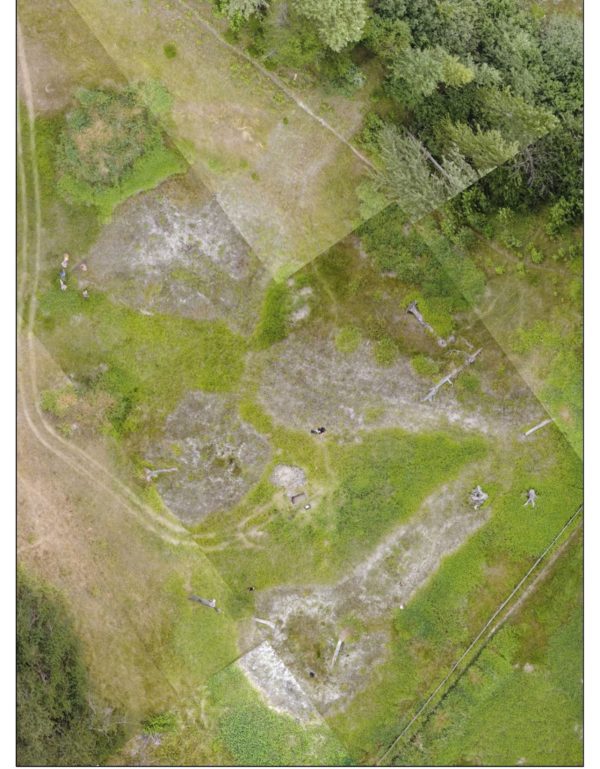
August 1, 2021. Air photo of the Sunshine Bay wetland (drought, no water).
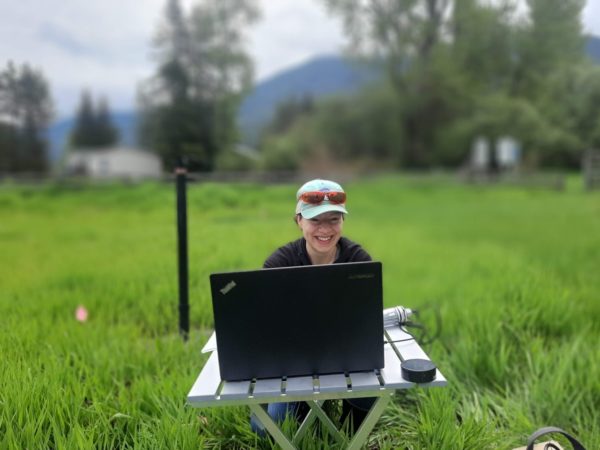
May 26, 2022. Moriah Tanguay, FoKLSS Stewardship Coordinator offloading water level data from the logger with the piezometer visible in the background.
Looking ahead: FoKLSS will enhance 0.8 ha of the Harrop wetland complex to make it more climate resilient by increasing the hydro-period, water depth, shade cover and habitat diversity. The following wetland construction activities will occur October – December 2022:
- Reed canary grass will be removed from the planned wetland area and spread in the soil spreading area.
- The centre of the wetland basin will be excavated 1.7 m deep, which is 1 m deeper than the water table during the drought in August 2021.
- Gradual slopes will be shaped from the basin centre.
- Numerous shallow depressions 1-3 m wide, 30 cm deep will be shaped, forming the new ephemeral pools.
- The wetland inlet may be lowered by 30 cm, pending professional advice.
- Pits, motes, mounds, points, islands, and peninsulas will be formed using the excess soil.
- Root wads and logs will be strategically placed throughout the new wetland.
- Existing unnatural mounds will be lowered and reshaped.
- Excess soil will be spread in the designated area next to the wetland basin.
- Compacted soils will be loosened.
- Excavator and bucket marks will be removed from the site.
- Native vegetation will be planted. This may include sheet mulching, seed spreading, staking, and transplanting with the help of volunteers.
- May 2023 onward – Post restoration monitoring will ensue on a weekly basis. Community engagement will be ongoing throughout the process.
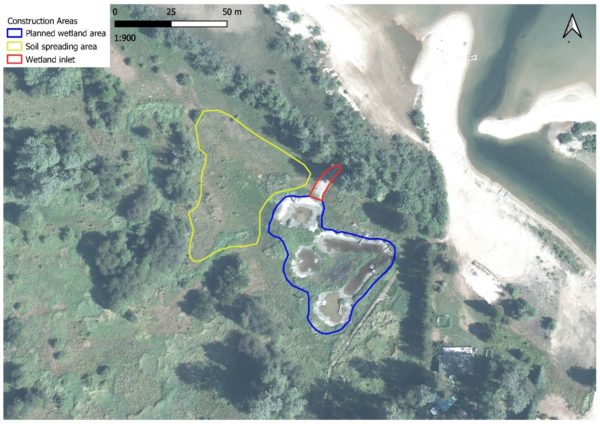
Planned construction area with ponds excavated in 2014 visible
We want to hear from you!
Community input and engagement is our priority and helps us strengthen our restoration plans going forward. Please click the link below to voice any questions, comments, or concerns you have about our 2022 Harrop Wetland Enhancement Project.
Link to Survey
